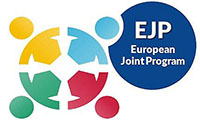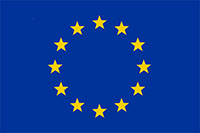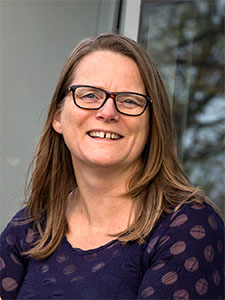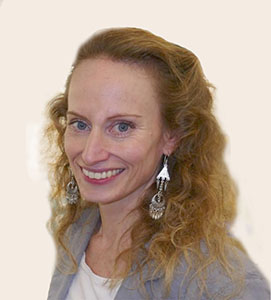Focus on European funding for research on rare diseases

Rare diseases affect around 30 million people in Europe, yet each one affects less than 5 out of every 10,000 people. These figures reflect the multiplicity and diversity of these diseases. Due to a lack of knowledge, patients are faced with the difficulty of diagnosis and therapeutic wandering, despite sometimes severe handicaps.

Four main objectives:
- Supporting research in the field of rare diseases
- Providing access to a virtual platform of data and resources needed to accelerate research
- Ensuring the training of patients, researchers and staff involved in rare diseases
- Fostering translational research* and clinical trials
*Translational Research: linking basic research with clinical trials to develop treatments and drugs
Who can benefit from these programmes?
These programmes bring together a large number of scientific experts, both researchers and academic clinicians, working on rare diseases. University hospital facilities bring together the best specialists in these diseases and offer a work environment at the cutting edge of new technologies. European reference networks are also involved in these projects. They provide health professionals with access to expert assessments that may not be available in their own country. Finally, patient associations have become indispensable. The expert assessment of patients and their knowledge of their disease represents an invaluable added value for research work in these diseases and reinforces the legitimacy in the eyes of institutions.
The terms and conditions:
- Treating rare diseases as defined by the European definition (less than 5 in 10,000 people)
- Transnational collaborations (minimum 4 EU member countries to which other countries listed as associate members may be associated).
- Interdisciplinary Research Projects
- Cover at least one of the following areas:
- Accelerate diagnosis
- Understand the disease and its mechanisms
In order to fulfil these missions, the institutions build on existing resources, networks and experiences in Europe in the field of rare diseases. The international dimension of these programmes makes it possible to take into account the advances of all the countries involved in the field and to pool skills and research efforts. In Europe (eligible members are EU members with other associate members including Switzerland, Czech Republic, Lithuania, Poland, Hungary, Slovakia, Estonia, Turkey and Canada).Non-listed countries (e.g. UK or Norway) may be associated but will not be eligible for funding under the EJP Programme.
Involving the knowledge and experience of patient organisations in these programmes helps to accelerate research and development.
Today ELA International is involved in 2 European programmes, for which it will receive funding to cover its shares as a partner. ELA’s involvement in these programmes gives the association a European dimension and represents a real added value for research institutions developing programmes on leukodystrophies.
- The first programme is about Alexander disease. The objective is to better understand the process of the outbreak of the disease and its development. It is led by Elly Hol, Professor of Neuroscience at the University of Utrecht in the Netherlands. It involves 7 research teams from 6 countries (Sweden, Czech Republic, Israel, Spain, Luxembourg, New Zealand) and will last 3 years. The total amount of this programme is €1,287,050. ELA will be funded by € 24,550 to enable its participation in five meetings and to welcome two researchers from each partner team to the annual ELA Families / Researchers conference for the duration of the programme.

- The second NG4Leuko programme is led by Vivi Heine, Pediatrician in Neuroscience at the University Medical Centre of Amsterdam in the Netherlands. This research programme will study the interactions between neurons and glia* in certain forms of hypomyelinating leukodystrophies including Vanishing White Matter (VWM) syndrome, metachromatic leukodystrophy (MLD) and Canavan disease. It has 5 research teams spread over 5 European countries (Italy, Germany, France, Portugal, Luxembourg), and it will take place over 3 years.The total amount of this programme is €1,282,000. ELA is funded by to €40,000 to cover the organisation of a scientific conference with around 20 participants and the development of a dedicated web page (http://NG4leuko.com).

The involvement of patient organisations in these European funding programmes underlines the importance of their presence and expertise. Their proximity to families and the general public and their ability to support these research programmes through communication actions are a real added value.
Despite the novelty of these programmes, ELA International has already been approached twice in 2019 and has received the necessary funding to participate. Thanks to these European programmes, ELA International strengthens its position in international research for rare diseases and becomes a key partner. The pooling of knowledge, expertise, research work and the use of all resources make it possible to improve the diagnosis and management of these diseases.
NG4Leuko: Review meeting
Support and structure rare diseases research, improve understanding of the disease, accelerate diagnosis, are as many objectives to which the European Joint Program for rare diseases responds. These programs bring together multidisciplinary scientific experts who work on these diseases and associate European reference networks and patient organizations that improve the legitimacy regarding the institutions.
For this reason, ELA international is involved in a few European programs and has received funding that covers its actions as partner.
NG4Leuko’s program led by Vivi Heine researcher in neurosciences from the University of Amsterdam, explores the interactions between neurons and glia in different types of hypomyelinating leukodystrophies, specifically in CACH syndrome, metachromatic leukodystrophy, and Canavan disease.
After 3 years of collaboration during which the researchers worked closely together, ELA international organized a review meeting in Paris on Friday March 31st . It brought together 12 researchers from different European laboratories involved in the project.
The project gathers 5 research teams from 5 European countries:
- Germany with Olivier Brüstle, Michaël Peitz and Giovanna Cenini from the University of Bonn who work on 2D and 3D cells culture models to observe molecular exchanges
- France with Maria Celia Angulo and Dorien Maas who work on interaction between neurons and oligodendrocytes on mouse models, at the Institute of Psychiatry and Neuroscience of Paris,
- Italy with Angela Gritti, Elisabeth Mangiameli and Clarissa Rosato from the Ospedale San Raffaele, The team works on induced Pluripotent Stem Cells (iPSC) and neuronal Stem Cells in the treatment of lysosomal diseases,
- The Netherlands with Vivi Heine and Liza Kok from the University of Amsterdam who work on cellular interaction in the white matter,
- Finally, the Portugal with Monica Sousa and Sandra Braz from the University of Porto who work on axon growth, degeneration and regeneration.
The participants, who arrived the day before, had a dinner organized in a typical Parisian brasserie on Thursday, a moment of conviviality that encouraged exchanges. The next day, the participants met for a working day in a studious atmosphere, organized in Paris. The different teams provided an update of the project advances, the different stages carried out, the approaches and the different technical resources used by each team. A review regarding the objectives of the project and a schedule of actions to be carried out have been made to continue the work.
Although the project is on fundamental research, ELA brought to the researchers the expectations of the families, to keep in mind moving towards treatments. Reciprocally, ELA reports back to the families the information and advances of the project with the NG4Leuko website.
The data collected by the different teams must be compiled and will be published in scientific publications.
The program in place for 3 years continues for 6 additional months and will finish at the end of the year.
With its implication in European research programs, ELA International strengthens its position in international research in the field of rare diseases and becomes a true partner. The sharing of knowledge, expertise, research, and valorization of all resources must make it possible to improve diagnosis and management of this diseases.
These programmes will bring together all the useful and necessary elements essential for researchers studying rare diseases.
*Cells that surround the neurons of the nervous system like glue. They participate in the control of the chemical environment by supplying nutrients and eliminating their waste products, and make myeline.



